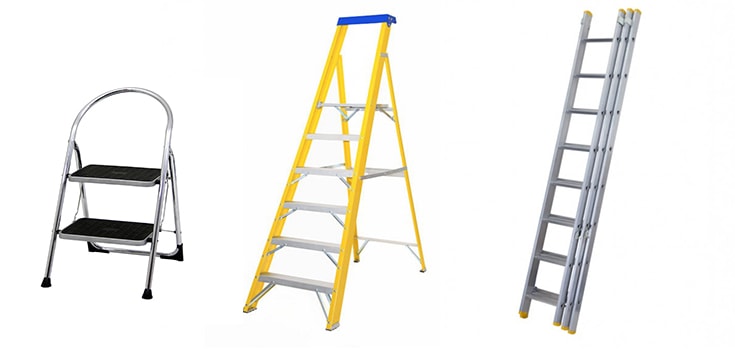The Facts About Safety When Using Ladders
24/03/2017
Ladders are amongst the most frequently-used pieces of access equipment across the globe. However, there are still some aspects of their usage which aren’t common knowledge, and sometimes these can make all the difference between using them safely or not.
Ladder Classifications Matter

Ladders are categorised into several groups according to the Working At Height Regulations. For instance, ladders that are classified as BS2037/BS1129 Class 3 are graded for domestic use, and accordingly shouldn’t be used in any workplace. The classification of EN131 is used for trade and light industrial use. Meanwhile, BS2037/BS1129 Class 1 is for heavy duty and industrial use, specialised for construction and similar industries. These classifications are there to help homeowners and trade professionals select the right ladder for a specific job, minimising the risk of accidents or injuries that arise from using improper access equipment. (For example, a domestic step ladder cannot fulfil the duties of a professional extension ladder.)
It’s Vital To Keep An Eye On The Time When Using Ladders

The Working At Height Regulations emphasise that ladder use should be low-risk and of a short duration. Single, unbroken tasks that take longer than 30 minutes in one position aren’t suitable for ladders. This is because as a general rule, ladders aren’t the right kind of access equipment for routinely heavy or strenuous work. According to law, you also shouldn’t carry more than 10kg up a ladder if it’s not been subject to a detailed manual handling assessment. This should also be carried out in the event that the ladder is used for tasks that can apply potentially unbalancing loads; for example, drilling or hammering.
Weight ratings must always be taken into account, and taller ladders don’t necessarily equate to increased weight ratings. Knowing the Duty Rating of your ladder is a crucial factor here. Essentially, the Duty Rating of your ladder is how much total weight it will support. For determining the Duty Rating, you must roughly calculate not only your own weight, but also the added weight of clothing and protective equipment, as well as the weight of any tools and supplies you’re using. Each classification of ladder has a different Duty Rating – just one more reason to choose the right ladder for the job.
Training And Knowledge Is Key To Ladder Safety

The importance of competence cannot be overstated when it comes to adhering to the Working At Height Regulations. The American Occupational Health and Safety Administration organisation deems proper knowledge and training of such significance that they believe it could be responsible for the vast majority of ladder injuries and fatalities. We’re similarly passionate here at Browns Ladders. Every one of our ladders adheres to the highest standards of safety, and we run both accredited and in-house training courses to help avoid injuries and accidents in the workplace. Click on the link to book your place today, or for any other questions or queries, you can speak to one of our friendly members of staff by calling us on 01282 615 517.
Don’t forget to follow us on Twitter: @brownsladders